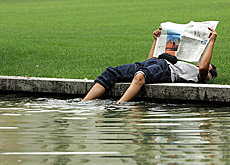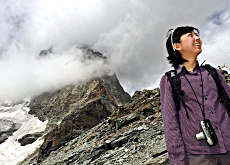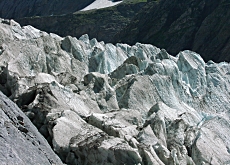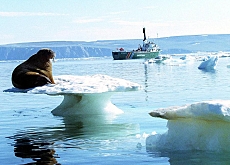Experts predict regular heatwaves

Hot spells are set to become commonplace in Switzerland, with average temperatures due to rise by up to five degrees Celsius by the end of the century, say experts.
Human influence on global warming is also growing, rivalling that of nature, and in the coming years the Alps are likely to be affected by more regular bouts of extreme weather.
These are just some of the conclusions by international climate specialists attending a three-day conference on “Climate variability and extremes over the past 100 years”, in Thun, canton Bern, which ends on Wednesday.
The meeting, organised by ProClim, a Swiss forum for climate and global change issues, has brought together 70 scientists from around the world.
Rising temperatures is currently a hot topic of conversation in Switzerland, with average temperatures for July poised to be the hottest for the month since 1983.
Yet experts such as Martin Beniston, a geography professor from Fribourg University attending the three-day workshop, forecast more sizzling summers.
“Average temperatures are expected to rise by four to five degrees by 2100, and on extreme days it could be up to ten degrees hotter than the high summer temperature we are now enjoying,” said Beniston.
Scientists at the workshop described the 2003 summer heatwave, when thermometers hovered around 30 degrees for several months, as a possible forerunner of future extreme weather patterns.
Stormy
In terms of climatic extremes, while hotter weather looks a certainty, the experts say the situation is more unpredictable regarding storms.
But reinsurance giant Swiss Re, which was also in attendance, says winter storms will cause increasing damage in Europe and present major challenges to the insurance business.
A study carried out by the world’s largest reinsurer predicts a 68 per cent increase in damage between 1975 and 2085.
In August 2005 floods and landslides caused by torrential rains swamped homes and destroyed roads and railway lines in many parts of Switzerland. The floods were estimated to have caused damage to the economy worth up to SFr2 billion ($1.6 billion).
Blame game
During a public workshop session on Monday, scientists reaffirmed the position of the Intergovernmental Panel on Climate Change, which holds that most of the warming observed over the past 50 years is attributable to human activities.
“Man’s influence on climate change continues to grow day-by-day,” said Heinz Wanner, a geography professor from Fribourg University.
“[The human] role behind global warming – via the increased use of cars, energy consumption and burning of fossil fuels – has become as significant as that of nature.”
The impact of global warming on Switzerland’s environment, particularly its mountainous regions and glaciers, remains a constant concern.
The Swiss authorities recently warned of rockfalls and landslides as the permafrost melts owing to rising temperatures.
The issue of disintegrating Swiss mountains was brought home at the beginning of July by the spectacular mass of rock that broke off the Eiger mountain.
Also a study by researchers at Zurich University, published earlier this month, predicted that alpine glaciers would all but disappear by the end of the century if global warming was not halted.
Results of computer modelling show that the Alps will lose 80 per cent of their glacier cover if summer air temperatures rise by three degrees.
swissinfo with agencies
According to the 2001 Climate Change report of the Intergovernmental Panel on Climate Change, increases in temperatures, such as those witnessed since 1910, have not occurred for such a duration or magnitude over the previous 1,000 years.
Worldwide temperatures have risen by about 0.6 degrees Celsius on average. Over the past 30 years, the temperature increase amounted to 0.1-0.2 degrees a decade as a global average.
In Switzerland the average temperature has risen by almost two degrees since 1970.
At the same time extreme weather occurrences have multiplied over the past few years, such as Hurricane Lothar in 1999 and the floods and landslides in 2000 and 2005.
Glaciers are recognised as one of the most sensitive indicators of climate change, advancing substantially during climate cooling and retreating during climate warming on moderate time scales.
Between 1985 and 2000, Swiss glaciers lost 18% of their surface area.

In compliance with the JTI standards
More: SWI swissinfo.ch certified by the Journalism Trust Initiative



You can find an overview of ongoing debates with our journalists here. Please join us!
If you want to start a conversation about a topic raised in this article or want to report factual errors, email us at english@swissinfo.ch.